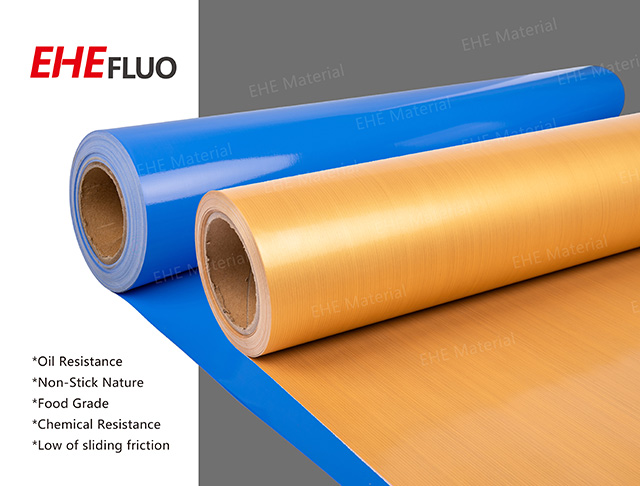Revolutionizing Food Baking: The Role of PTFE (Teflon) High-Temperature Fabric
Update time: 2025-04-30 Views: 680
Description
In the dynamic world of food baking, where precision, efficiency, and safety are paramount, PTFE (polytetrafluoroethylene) high-temperature fabric, commonly known as Teflon, has emerged as a game-changing material. Renowned for its exceptional properties, this innovative fabric is transforming how professional bakers and home enthusiasts approach their craft.
Why PTFE High-Temperature Fabric?
1.Non-Stick Excellence
2.Thermal Stability & Safety
With a continuous operating temperature range of -70°C to 260°C (and peak resistance up to 380°C), PTFE fabric withstands the intense heat of commercial ovens without degrading or emitting harmful substances. This makes it ideal for baking bread, cakes, cookies, and even specialty items like macarons or éclairs.
3.Chemical Resistance & Durability
PTFE’s resistance to acids, alkalis, and organic solvents ensures that it remains inert when in contact with food ingredients. Its robust construction, often reinforced with glass fiber, guarantees longevity—resisting tears, abrasions, and repeated use.
4.Uniform Heat Distribution
By promoting even heat transfer, PTFE fabric prevents hotspots that can lead to uneven baking or burnt edges. This ensures consistent results, whether baking a single tray or scaling up production.
5.Eco-Friendly & Easy Maintenance
Unlike disposable parchment paper, PTFE fabric is reusable and washable. A simple wipe or rinse removes residue, reducing waste and operational costs. Additionally, leading manufacturers now offer plant-based alternatives like Teflon™ EcoElite™, aligning with sustainability trends.
Key Applications in Food Baking
Baking Sheets & Liners: Replace traditional parchment paper with PTFE-coated mats for cookies, bread, and pastries.
Mold Liners: Line cake pans or tart molds to ensure flawless demolding without cracking or sticking.
Conveyor Belts for Industrial Baking: Used in high-speed ovens for cookies, crackers, or snack bars, ensuring smooth transport and even baking.
Proofing Cloths: Facilitate dough rising by preventing sticking and maintaining moisture.
Chocolate & Confectionery Work: Acts as a non-stick surface for tempering chocolate, molding candies, or rolling fondant.
Advantages Over Traditional Alternatives
Cost-Efficiency: While the initial investment may be higher, PTFE fabric pays for itself through reuse and reduced material waste.
Hygiene & Safety: Meets FDA and EU food-contact standards, ensuring no chemical migration into food.
Versatility: Suitable for manual and automated baking processes, from artisanal bakeries to large-scale food production.
Why Choose PTFE Fabric for Your Baking Needs?
In an industry where margins are tight and quality is non-negotiable, PTFE high-temperature fabric offers a competitive edge. Its ability to streamline operations, enhance product consistency, and reduce environmental impact makes it a must-have for modern baking facilities.
Upgrade Your Baking Game Today!
Whether you’re a boutique bakery, commercial food processor, or home baking enthusiast, PTFE fabric delivers unmatched performance. Explore customizable options—from sizes and thicknesses to branding—to suit your unique requirements.
Previous: Silicone Baking Mats: The Sustainable, High-Performance Solution for Modern Baki...
Next: What Are Teflon Seamless Belts?



